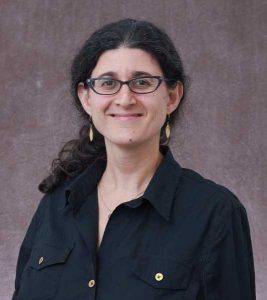Lecture 1.5
Title: Invited Lecture — Quantitative analysis receptor spatiotemporal organization and signaling
Lecturer: Prof. Khuloud Jaqaman
Lecturer Website: https://www.utsouthwestern.edu/labs/jaqaman/
Lecturer Email: Khuloud.Jaqaman@UTSouthwestern.edu

Dr. Khuloud Jaqaman is an Assistant Professor in the Department of Biophysics and the Lyda Hill Department of Bioinformatics at UT Southwestern Medical Center (Dallas, TX). She did her undergraduate studies in physics at Birzeit University (West Bank), and her PhD research in Computational Biophysics at Indiana University Bloomington. She then did postdoctoral training at The Scripps Research Institute (La Jolla, CA), which introduced her to the fascinating world of quantitative cell biology and cellular biophysics.
Dr. Jaqaman’s research is focused on the spatiotemporal organization of cell surface receptors and its consequences for cell signaling, with particular interest in receptors that regulate angiogenesis. Her laboratory utilizes light microscopy to monitor molecular behavior in its native cellular environment, and develops computer vision and mathematical modeling approaches to achieve a quantitative understanding of the complex relationships between receptor spatiotemporal organization, activation and signaling.
Title: Quantitative analysis receptor spatiotemporal organization and signaling
Abstract: There is mounting evidence that cell surface receptor organization plays an important role in cell signaling. We develop quantitative imaging and computational analysis approaches to study the spatiotemporal organization of cell surface receptors, with particular focus on the receptor tyrosine kinase VEGFR2 (Vascular Endothelial Growth Factor Receptor 2) and its signaling partners in endothelial cells. Using live-cell single-molecule analysis, we found that VEGFR2 exhibits both motion and oligomerization state heterogeneity in its resting state, and that its activation steps by ligand depend on its state prior to ligand binding. Using novel conditional colocalization analysis tools, we also found that the interactions of VEGFR2 with is downstream effectors exhibit spatial compartmentalization on the cell surface, possibly to enhance their signaling efficiency.
Suggested Reading or Key Publications:
Links to Relevant Software:
- e
- f
- g
- h
- Question 1
- Question 2